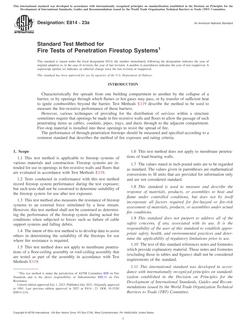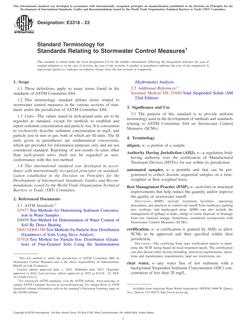ASTM D8375-23 82 PDF Download

Click here to purchase
1.1 This test method allows for the concentration determination of the cannabinoids listed in Table 1, and shall apply to any dried raw material from a cannabis plant (Note 1, Note 2)regardless of the type of cannabis plant from which it was derived.2 For the sake of brevity, the term “cannabis” shall be used from now on to refer to any type of cannabis plant including those that can be classified as hemp. The procedure includes sub-sampling a ground, homogeneous sample, extraction with methanol:water (80:20, v:v),3,4 dilution in methanol and analysis by liquid chromatography tandem mass spectrometry (LC-MS/MS). The method allows for a wide-range ofsample concentrations to be determined by using a 1000-fold calibration range and the option to perform multiple levels of sample dilution. The calibration curve is prepared in methanol over a range of 10 ng ⁄mL to 10 000 ng/mL for all seventeen cannabinoids, or a subset of cannabinoids if desired, while the sample extracts are diluted in methanol into the calibration range.3,4,5 For example, a 1/500 dilution of sample extracts allows concentration determination over a range of 0.5 mg ⁄g to 500 mg ⁄g in cannabis. The method was validated with quality control samples prepared in methanol, a candidate certified reference material (CRM), and repeat extraction and analysis of cannabinoid samples.3
NOTE 1—For this test method, dried raw material from a cannabis plant includes one or more of inflorescence, leaves, or stems.
NOTE 2—Certain jurisdictions or regulations may require specific parts of the plant to be included or excluded for analysis and those regulations will take precedence for the selection of plant parts.
1.2 Units—The values stated in SI units are to be regarded as standard. No other units of measurement are included in this standard.
1.3 List of Measurable Analytes—See Table 1.
1.4 This standard does not purport to address all of the safety concerns, if any, associated with its use. It is the responsibility of the user of this standard to establish appropriate safety, health, and environmental practices and determine the applicability of regulatory limitations prior to use.
1.5 This international standard was developed in accordance with internationally recognized principles on standardization established in the Decision on Principles for the Development of International Standards, Guides and Recommendations issued by the World Trade Organization Technical Barriers to Trade (TBT) Committee.
Product Details
- Published:
- 03/01/2023
- Number of Pages:
- 17
- File Size:
- 1 file , 320 KB
- Redline File Size:
- 2 files , 600 KB
- Note:
- This product is unavailable in Russia, Ukraine, Belarus


